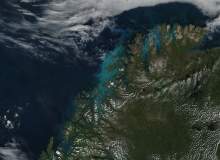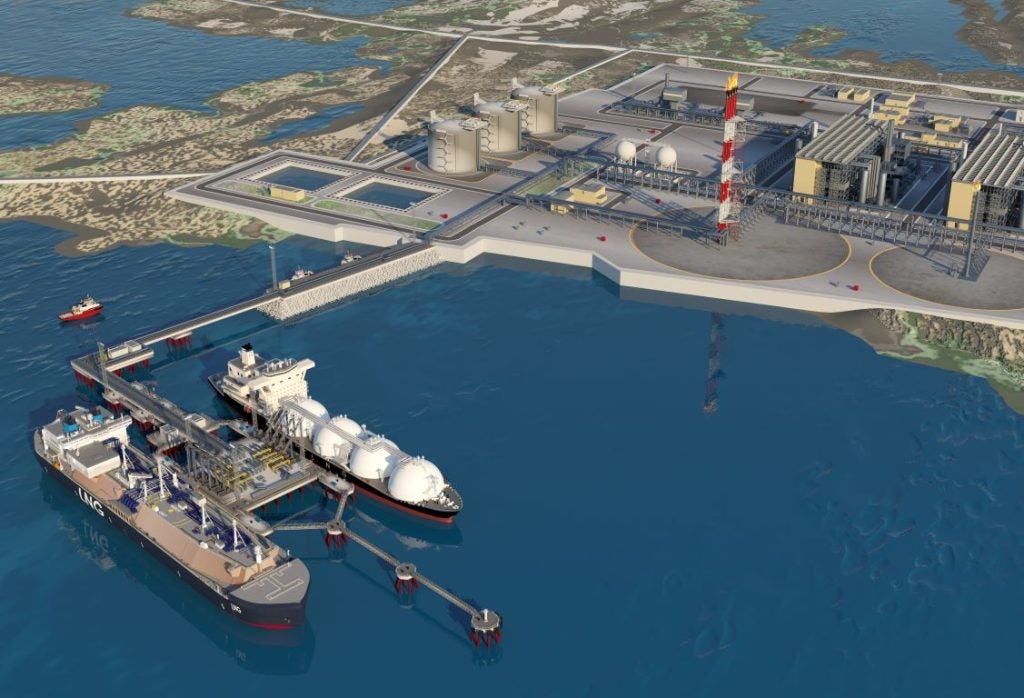

There’s inherent risk involved in all business ventures, but in the offshore oil and gas industry, the amount of money at stake can often reach eye-watering levels. In an environment where more than half of the exploratory wells drilled come up dry, the industry’s risk/return ratio for offshore exploration can be intimidating for even the most seasoned explorers, and represents a massive barrier to entry for newcomers.
As a result, the industry is consistently on the lookout for ways to mitigate the financial risk of exploratory drilling, not to mention the unnecessary damage caused to the marine environment by drilling wells that will only have to be plugged and abandoned.
One of the scientific principles that can help take some of the guesswork out of both offshore and onshore exploration is known as induced polarization (IP), which involves applying an electrical field to a suspected deposit and measuring the characteristic geo-electrical footprint of pyrite anomalies, which are usually a solid indicator of underlying hydrocarbons. It’s a complex technology that is currently only applicable in shallow waters, but it has been demonstrated to flag hydrocarbon deposits with an accuracy of 80-90% without disrupting subsea wildlife, as has been noted of seismic surveying.
Norway-based ORG Geophysical launched in 2012, offering a highly efficient method of detecting IP anomalies called Differentially-Normalized Method of Electrical Prospecting (DNME), a technology originally developed by Russia’s Siberian Geophysical Research and Production Company (SGRPC). The company’s senior geoscientist Vitaliy Yurchenko and CEO Geir Drivenes explain its potential and discuss the challenge of bringing it to a wider market.
How well do you really know your competitors?
Access the most comprehensive Company Profiles on the market, powered by GlobalData. Save hours of research. Gain competitive edge.

Thank you!
Your download email will arrive shortly
Not ready to buy yet? Download a free sample
We are confident about the unique quality of our Company Profiles. However, we want you to make the most beneficial decision for your business, so we offer a free sample that you can download by submitting the below form
By GlobalDataSee Also:
Chris Lo: Could you describe the basis of the DNME method for detecting induced polarization in an offshore setting?
Vitaliy Yurchenko: Sure. We know that if you have an oil reservoir, there are always seepages or micro-leaks. The seepages create a reducing environment in the overburden, which alters mineral properties. Among other effects, it leads to the formation of pyrite. Pyrite exists in the form of metallic grains embedded in an ionic conducting medium, such as pore fluid.
Then, when applying an electric field to such a system, you trigger electrolytic processes. In essence, it’s very similar to charging a battery. At sea, we stream currents up to 1,500 amps for a few seconds, and then we pick up the response during a few seconds’ pause. So we let this battery discharge and measure the signal. Pyrite has a very distinctive geo-electric footprint, which is then processed, inverted and interpreted.
CL: The DNME and induced polarization concepts are not new ideas – could you explain the origins of these concepts?
India’s exceptional 21st century growth is threatened by the huge cost of importing oil and gas to satisfy surging demand.
VY: The [IP] method, as you mentioned, has been known since 1912, when it was invented by the Schlumberger brothers. First, historically, it was used for metal ore prospecting. It’s hard to tell when exactly it was applied for the first time offshore and when it was applied for the first time for oil prospecting, but perhaps sometime in the 60s. DNME is a method for detecting induced polarization anomalies, which are particularly associated with petroleum deposits.
CL: Have these techniques been used commonly in the offshore industry?
VY: To the best of our knowledge, they’ve been extensively used in Russia. They’ve been used a lot in the USA and in China. In the USA, it’s been used mostly onshore.
CL: You’ve cited the Russian company SGRPC as the original developer of the DNME technology and ORG’s main collaborator. How did this collaboration come about and what was your initial idea for using the technology?
VY: SGRPC is the Russian company that has developed and patented a very efficient state-of-the-art method for picking up the IP response, and separating it from the rest of the electromagnetic signal. You might know that there are many companies doing electromagnetic prospecting, but few of them are in the possession of this methodology for separating IP and EM [electromagnetic] responses.
ORG, in turn, has extensive experience in offshore and subsea technologies. So with this merger of expertise, we aim to develop this method further and make it suitable to use the technology for de-risking oil and gas prospecting worldwide.
CL: So you want to bring the technology to a wider market than it’s been so far?
VY: Absolutely, we think it’s not been appreciated.
CL: What are the main advantages of the IP technique for offshore oil and gas companies carrying out exploration work, when compared to traditional exploratory drilling?
VY: That’s actually a very easy question to answer. You know the success rate of exploratory drilling on average? In the best case, it’s about 30-40%. The success rate of DNME is about 80-85%. So it’s a very cost-effective method to increase the success rate of exploratory drilling.
CL: Is it also advantageous from an environmental perspective?
VY: There is almost zero environmental impact from IP, and it reduces the dry drilling and all the associated consequences in terms of pollution.
CL: And it has a reduced effect when compared to seismic surveying?
VY: That’s absolutely correct, because we don’t shoot any sound waves at all. We are streaming current. The only way IP might affect the environment is via so-called galvanotaxis. If you put a fish between two electrodes, it might swim in the direction of the electric field for some seconds. Of course, there is always room for more research, but the existing scholarly articles about galvanotaxis indicate that the values of electric fields that we use are well below the sensitivity limits of the fish.
CL: Have you carried out projects with a lot of offshore clients since entering the market?
Geir Drivenes: We started doing some tests in the North Sea in 2012, and we went commercial by the end of 2012. We have collected a lot of data during 2013 for several Norwegian-based oil companies. This year we have the busiest season of all – we’ve been operating since April and we will probably operate during September.
CL: Have your trials of IP in the North Sea helped to build a case for the technology as an effective survey method?
With offshore riches far from proven, will this West African wildcard match its potential with major discoveries?
GD: Yes, I think we tested about 20 known discoveries to see how they looked using our method. I’m sure that 18 of them were, without doubt, good results – we could see them easily. Although finding already-drilled prospects is not a good business, so we have to build up the statistics on blind tests, which we are now doing, and there are more than 10 wells on our data, and only one is not as expected from our method, so we are at 90% [accuracy].
CL: What have been the biggest challenges involved in bringing this technology to the market?
GD: Well, it’s convincing companies of the value of it. You can go through all kinds of theoretical discussions, but you have to demonstrate that it works, which we are thinking that we have done. It is a standard phrase in the oil industry, that companies are very conservative, but this is not true for all of them.
CL: IP is applicable at depths of between 50m and 500m – is it possible that the method could become effective in deeper waters in the future? Is that something you are thinking about?
GD: Yes, absolutely – there’s some investment we haven’t done, but yes, it’s feasible. We could start immediately, if you had the money for us. We have some plans to maybe figure out if this could be used in shale gas exploration, but the main challenge is deeper water.
CL: How is your collaboration with the University of Oslo helping to identify new possibilities for the technology?
VY: Some of the areas that we’ve dealt with so far have very strong, distinct 3D features, for instance geological objects like salt domes. Interpretation of such data based on 1D or 2D inversion has been a challenge. One of the projects at the University of Oslo has the goal to develop algorithms and computer codes for solving inverse three-dimensional electromagnetic problems. It will give more detailed data, more precise interpretation.



.gif)


